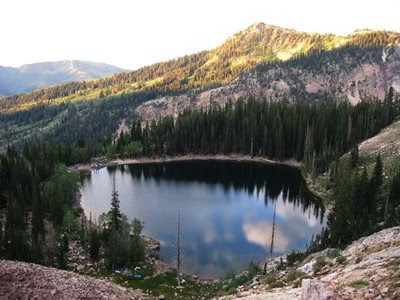
In
physiology,
medicine, and
anatomy,
muscle tone (aka
residual muscle tension or
tonus) is the continuous and passive partial
contraction of the muscles. It helps maintain
posture, and it declines during
REM sleep. It is not to be confused with the concept of
toning in
physical exercise.
Unconscious
nerve impulses maintain the muscles in a partially contracted state. If a sudden
pull or stretch occurs, the body responds by automatically increasing the muscle's tension, a reflex which helps guard against danger as well as helping to maintain
balance.
The presence of near-continuous innervation makes it clear that tonus describes a "default" or "steady state" condition. There is, for the most part, no actual "rest state" insofar as activation is concerned.
In terms of skeletal muscle, both the
extensor and
flexor muscles, under normal
enervation maintain a constant tone while "at rest" that maintains a normal posture.
Cardiac muscle and
smooth muscle, although not directly connected to the skeleton, also have tonus in the sense that although their contractions are not matched with those of antagonist muscles; their non-contractive state is characterized by (sometimes random) enervation.
Physical disorders can result in abnormally low (
hypotonia) or high (
hypertonia) muscle tone. Another form of hypertonia is
Paratonia, which is associated with
dementia.
Paratonia or
gegenhalten is classified as a form of
hypertonia with an involuntary variable resistance (i.e reduced ability of a muscle to stretch) during passive movement (i.e a movement without effort). The disease develops during a period of
dementia and the degree of effect is dependent upon the disease's progress. Paratonia was classified very recently by experts, and is unrelated to the much more typical spasticity associated with
spastic diplegia and simlilar forms of
cerebral palsy.
Clasp-knife response refers to a
stretch reflex with a rapid decrease in resistance when attempting to flex a joint, usually during a
neurological examination. It is one of the characteristic responses of a
upper motor neuron lesion.
It gets its name from the resemblance between the motion of the limb and the sudden closing of a
claspknife after sufficient pressure is applied.
Although seemingly a stretch reflex when flexing a joint, force from the muscle during the attempt to flex a joint is actually thought to be caused by the
tendon reflex of the antagonistic muscle of that joint, which is an extensor muscle that becomes stretched
. In
upper motor neuron lesions,
muscle tonus may increase and resistance of muscle to stretch increases. However, if sufficient force is applied, limb resistance suddenly decreases
.
 The largest artificial hole in the earth, Bingham Canyon Mine is one of the wonders of the world, and a monument to industry. There are tours conducted on a regular basis. Some of the mining machinery is very impressive, but all is dwarfed in scale by the huge open pit excavation.
The largest artificial hole in the earth, Bingham Canyon Mine is one of the wonders of the world, and a monument to industry. There are tours conducted on a regular basis. Some of the mining machinery is very impressive, but all is dwarfed in scale by the huge open pit excavation.






















